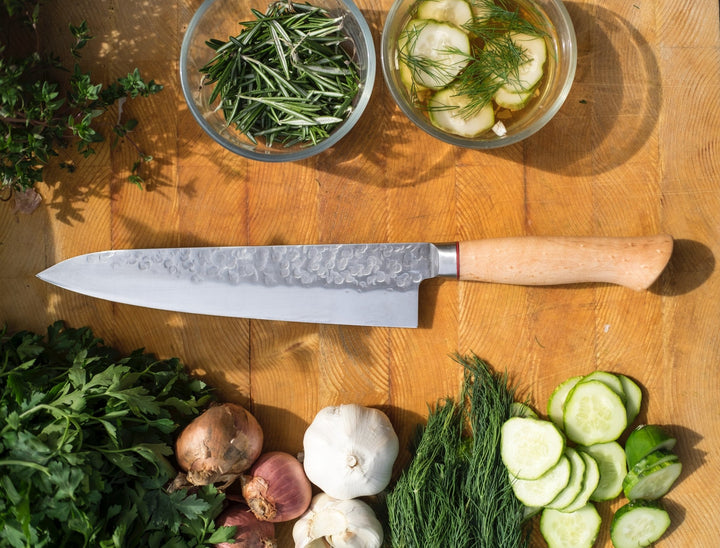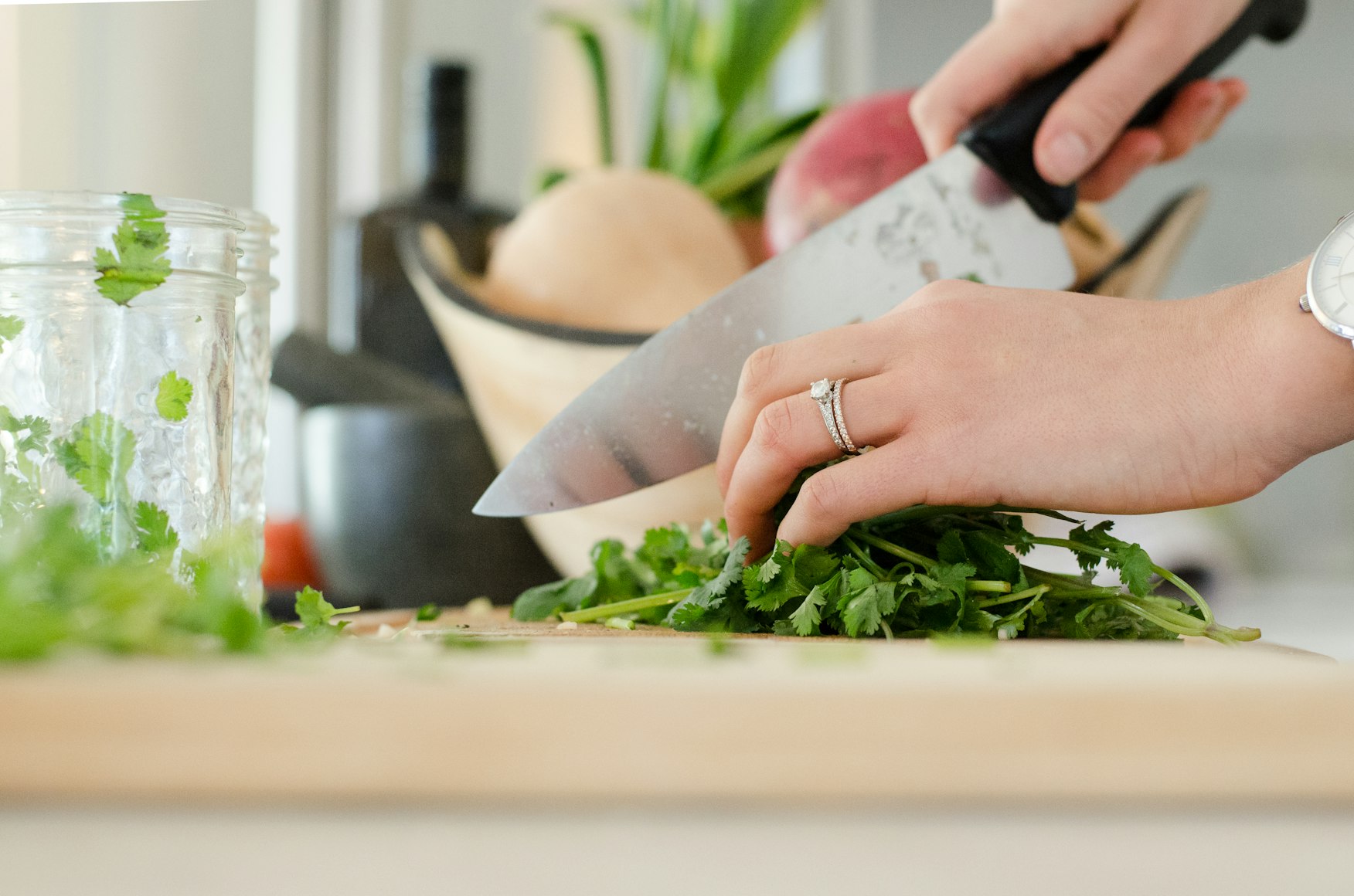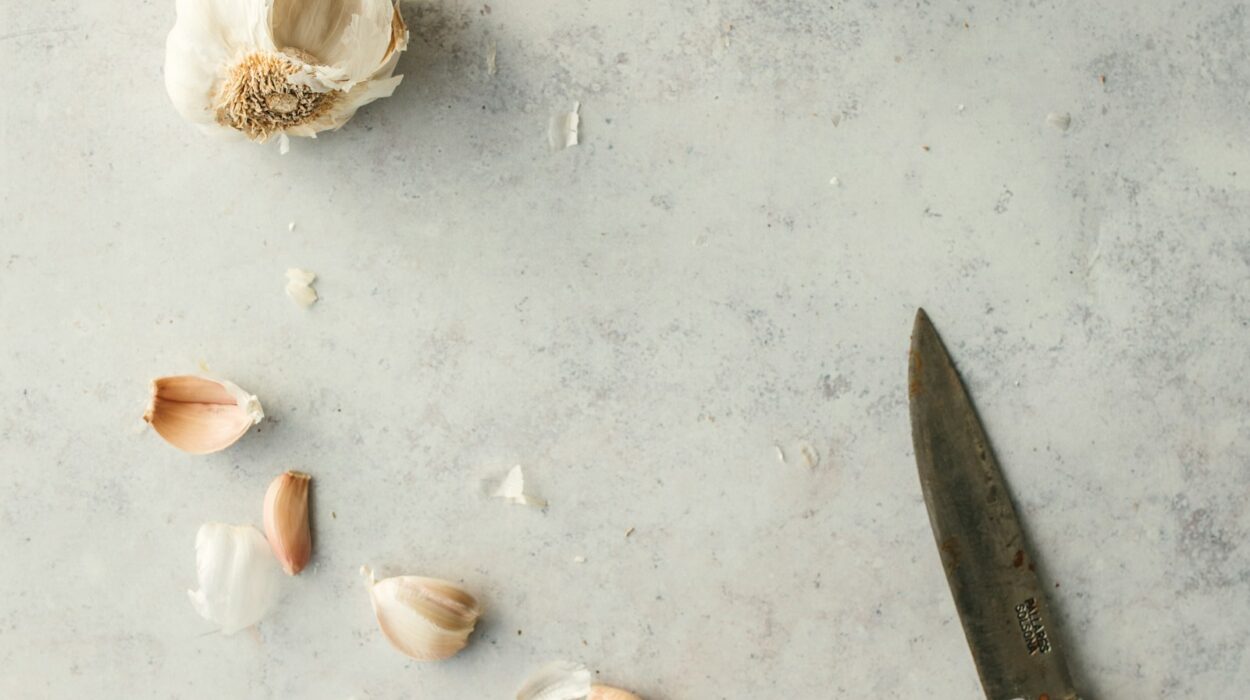The world of kitchen knives is vast and varied, leaving many cooking enthusiasts pondering over which knife to use for their culinary creations. One common question that arises is, ‘Is a Santoku knife a chef knife?’ In this detailed article, we will delve into the specifics of both the Santoku knife and the chef knife to provide clear answers for kitchen hobbyists and professional chefs alike.
Understanding the differences and benefits of these knives can enhance your cooking experience tremendously. With that said, let’s embark on this journey to uncover the unique characteristics and benefits of the Santoku knife and chef knife.

Santoku Knife vs. Chef Knife: An Overview
What is a Santoku Knife?
The term Santoku means ‘three virtues’ or ‘three uses’ in Japanese, referring to its versatility in slicing, dicing, and mincing. The Santoku knife is known for its balanced design, typically shorter and lighter than a traditional chef knife.
What is a Chef Knife?
A chef knife, also known as a cook’s knife, is a versatile tool in Western kitchens. Characterized by a broad, sharp blade, it excels in various tasks such as chopping, slicing, and disjointing large cuts of meat.

Key Differences Between Santoku and Chef Knives
Blade Shape and Size
The Santoku knife typically features a shorter blade ranging from 5 to 7 inches, with a straight edge and a sheep’s foot tip. On the other hand, the chef knife usually has a curved blade that allows for a rocking motion, with lengths ranging from 8 to 12 inches.
Design and Ergonomics
The design of the Santoku knife includes a flatter edge, making it more suitable for an up-and-down chopping motion. Chef knives, with their curved blades, are designed for a rocking motion, making them well-suited for tasks that require precision and power.

Benefits of Using a Santoku Knife
Versatility in the Kitchen
One of the primary benefits of the Santoku knife is its versatility. Whether you are slicing vegetables, dicing fruits, or mincing herbs, a Santoku knife can handle it all with ease.
Ease of Use
The shorter, lighter design of the Santoku knife makes it easy to handle and control, especially for those who may find larger knives cumbersome.

Benefits of Using a Chef Knife
Strong and Sturdy for Heavy Tasks
A chef knife is designed to undertake heavier tasks. Its robust design makes it ideal for cutting through dense vegetables and large cuts of meat.
Efficient Rocking Motion
The curved blade of the chef knife allows for a smooth rocking motion, making it efficient for chopping herbs and other ingredients finely.
Materials and Construction
Blade Materials
Both Santoku and chef knives are made from various materials, including stainless steel, high-carbon steel, and ceramic. Each material has its pros and cons, such as stainless steel being rust-resistant and high-carbon steel retaining sharpness longer.
Handle Materials
The handles of these knives can be made from wood, plastic, or composite materials. It’s essential to choose a handle that provides a comfortable grip and balance for the best experience.
Choosing the Right Knife for You
Personal Preference
Your choice between a Santoku knife and a chef knife will ultimately depend on personal preference and the types of tasks you perform most frequently in the kitchen.
Task-Specific Needs
Consider the tasks you need to perform. If you often find yourself preparing intricate vegetable cuts or desire a lightweight option, a Santoku knife may be ideal. For more robust tasks like cutting through bones or large chunks of meat, a chef knife would be more suitable.
Maintenance and Care
Sharpening Your Knife
Proper sharpening is crucial to maintaining the performance of both Santoku and chef knives. Using the right whetstone can ensure your knife remains sharp and effective.
Storage Tips
Storing your knives correctly by using knife blocks, magnetic strips, or protective sleeves can prolong their lifespan and maintain their sharpness.
Cost Considerations
Budget-Friendly Options
Both Santoku and chef knives come in a range of prices. While high-end models can be costly, there are numerous affordable options that still deliver excellent performance.
Long-Term Investment
Investing in a high-quality knife can save money in the long run by reducing the need for frequent replacements and providing better performance over time.
Common Misconceptions
1. The More Expensive, the Better
Price does not always equate to quality. It’s important to research and test a knife to ensure it meets your needs, regardless of its price point.
2. One Knife Fits All
Different knives are designed for different tasks. Having both a Santoku and a chef knife in your kitchen ensures you’re prepared for any culinary challenge.
Expert Recommendations
Many chefs recommend keeping both a Santoku and a chef knife on hand. Renowned chefs like [Chef Name] have praised the balance and versatility of the Santoku knife while acknowledging the robustness of the chef knife for more demanding tasks.
Conclusion
While a Santoku knife and a chef knife share several similarities, they each bring unique strengths to the kitchen. By understanding their specific benefits and uses, you can make an informed decision on which knife to incorporate into your culinary toolkit. Whether you’re an amateur cook or a professional chef, having the right knife for the right task can make cooking more enjoyable and efficient.
FAQs
1. Can I use a Santoku knife for all tasks?
While versatile, a Santoku knife may not be ideal for tasks requiring significant force, such as cutting through bones.
2. How do I properly care for my Santoku knife?
Proper care includes regular sharpening with the right tools and storing the knife properly when not in use. You can find more tips here.
3. Which handle material should I choose?
Handle materials come down to personal preference. Wood handles offer a traditional feel, while plastic and composite handles are more durable and often more comfortable.
For more information on different types of kitchen knives and their uses, check out this external link.
As an Amazon Associate, I earn from qualifying purchases.
As an Amazon Associate, I earn from qualifying purchases.


